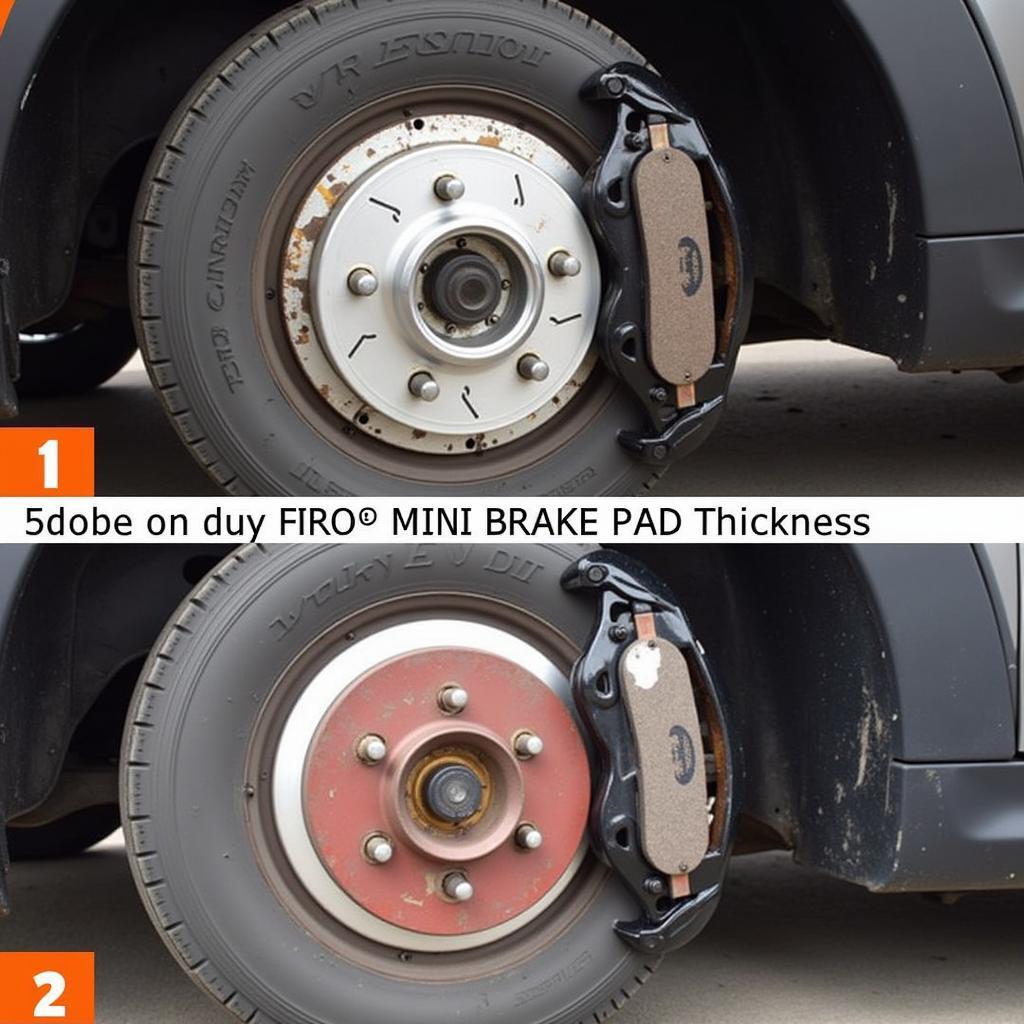Experiencing a persistent brake warning light on your 2016 Tacoma? You’re not alone. This is a common issue that can be caused by various factors, ranging from simple wear and tear to more complex electrical problems. While it can be concerning, this guide will walk you through the potential causes, troubleshooting steps, and possible solutions for a 2016 Tacoma brake warning light that won’t turn off.
Understanding Your Tacoma’s Brake System Warning Lights
Before we dive into the specifics, it’s crucial to understand what your Tacoma’s brake warning light is trying to tell you. Unlike other warning lights that might simply indicate a system check, the brake warning light usually signals a potential problem within your braking system.
There are typically two main brake-related warning lights on your dashboard:
-
Red Brake Warning Light: This light typically indicates a serious issue with your braking system, such as low brake fluid or a complete brake system failure. If this light illuminates while driving, it’s essential to pull over immediately and seek professional help.
-
Amber ABS Warning Light: This light signifies a problem with your Anti-lock Braking System (ABS). While your traditional braking system may still function, the ABS, which prevents wheel lockup during hard braking, might be compromised.
This article focuses primarily on the red brake warning light staying on in a 2016 Tacoma.
Common Causes of a Brake Warning Light on a 2016 Tacoma
There are several reasons why your 2016 Tacoma’s brake warning light might stay on:
1. Low Brake Fluid:
The most common culprit is low brake fluid, which is essential for transmitting force to your brakes. As brake pads wear down, the brake fluid level naturally decreases. If the fluid level drops too low, it triggers the warning light.
2. Worn Brake Pads:
Brake pads are designed to wear down over time. When they reach a certain thickness, the brake warning light will activate as a reminder to replace them.
3. Faulty Brake Light Switch:
The brake light switch, located behind the brake pedal, signals the brake lights to illuminate when you press the pedal. A malfunctioning switch can cause the brake lights to stay on or not illuminate at all, triggering the warning light.
4. ABS Sensor Issues:
While less common, a problem with one or more ABS wheel speed sensors can also trigger the brake warning light. These sensors monitor wheel speed and relay information to the ABS control module.
5. Electrical Issues:
Wiring problems, a faulty brake control module, or other electrical gremlins can also cause the brake warning light to stay illuminated.
Troubleshooting Your Tacoma’s Brake Warning Light
If your brake warning light is on, here are some steps to help you diagnose the problem:
-
Check the Brake Fluid Level:
- Park your Tacoma on a level surface and turn off the engine.
- Locate the brake fluid reservoir under the hood (refer to your owner’s manual if needed).
- Check the fluid level. It should be between the “MIN” and “MAX” lines.
- If the level is low, add the appropriate brake fluid (DOT 3 or DOT 4 for most Tacomas).
-
Inspect the Brake Pads:
- If possible, visually inspect your brake pads through the wheel spokes.
- Look for significant wear or if the pad material is close to the metal backing plate.
- If the brake pads appear worn, it’s recommended to have them replaced by a professional.
-
Check the Brake Light Switch:
- Locate the brake light switch above the brake pedal.
- With the engine off, press and release the brake pedal while observing the brake lights.
- If the lights don’t illuminate or stay on constantly, the switch likely needs replacement.
-
Scan for Trouble Codes:
- If the basic checks haven’t revealed the problem, it’s time to read the diagnostic trouble codes (DTCs) stored in your Tacoma’s computer.
- You can use an OBD-II scanner, available at most auto parts stores, or take your vehicle to a mechanic.
- The codes will pinpoint the specific area of the braking system that requires attention.
When to Seek Professional Help
While some causes of a brake warning light can be addressed with basic troubleshooting, it’s always best to consult a qualified mechanic for any brake-related issues. If you’re uncomfortable with DIY repairs or the issue persists after basic troubleshooting, don’t delay seeking professional assistance.
“Brakes are one of the most critical safety systems in your vehicle. Never ignore a brake warning light, and always err on the side of caution when it comes to brake repairs.” – John Smith, ASE Certified Master Technician
Preventing Future Brake Problems
Regular maintenance is key to preventing future brake problems and ensuring your safety on the road. Here are some tips:
- Regular Brake Inspections: Have your brakes inspected by a qualified mechanic at least every 12,000 miles or as recommended in your owner’s manual.
- Timely Brake Pad Replacement: Don’t wait for the brake warning light to illuminate before replacing your brake pads. Refer to your owner’s manual for recommended replacement intervals.
- Brake Fluid Flush: Over time, brake fluid can absorb moisture, reducing its effectiveness. It’s generally recommended to have your brake fluid flushed every 2 years or 24,000 miles.
- Quality Parts: When replacing brake components, always opt for high-quality parts from reputable manufacturers.
Conclusion
Addressing a brake warning light in your 2016 Tacoma is crucial for your safety and the longevity of your vehicle. By understanding the potential causes, troubleshooting steps, and knowing when to seek professional help, you can keep your Tacoma’s braking system in top condition and ensure worry-free driving.

